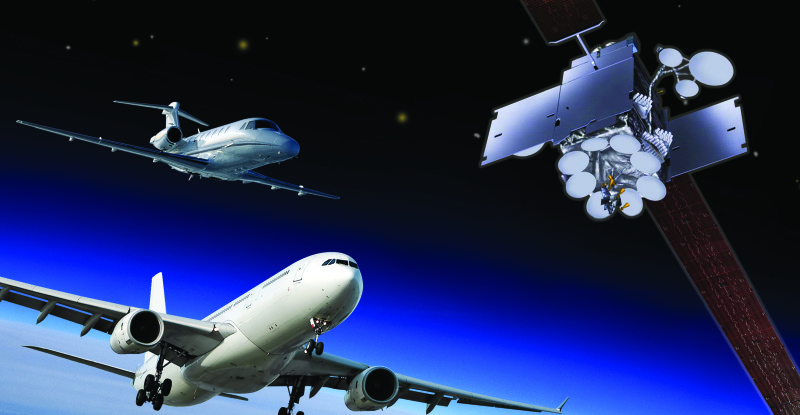Ah, the intrigue. What does Inmarsat have in store for its next constellation? Is it a given that I-6 will simply be the next generation of L-band satellites aimed at complementing the Global Xpress (GX) Ka-band network, as reported? Or is the satellite operator planning something else entirely to address the unrelenting need to provide more bandwidth to customers on land, at sea and in the air, and in the face of fresh competition from the likes of OneWeb, which plans to crack into the inflight connectivity market?
In July of last year, Inmarsat said the I-6 satellites had not yet been designed or ordered and a first launch is targeted only towards the end of the decade. But after learning from Emirates that the London-headquartered satellite operator is now formalizing its plans for a post-GX network that would support inflight high-speed connectivity, we reached out to Inmarsat for comment.
Company VP aviation safety and operational services, Mary McMillan, tells RGN: “The only information I could offer is that yes, there is going to be an I-6 constellation and we’re already entering into discussions as to requirements and capability built into the I-6 constellation.”
Will the constellation be an L-band offering to replace Inmarsat’s now long-in-the-tooth I-3 constellation, or is the company now eyeing more Ka activity in light of the world’s clear need for high-bandwidth solutions? “The answer to that? I would not want to say,” says McMillan. “One of the things that happens in this industry is that there are long lead times and [we need] massive amounts of capacity to make things happen.”
With I-6, Inmarsat will “definitely look to make sure we can maintain the reliability factor, redundancy factor and existing safety factor while seeking to improve all three in the I-6”, she says.
She later added that safety services for aero and maritime “will for the foreseeable future stay on the L-band channel”. But the company’s current I-4 L-band constellation could conceivably meet this need.
Meanwhile, Inmarsat is making progress in its delayed roll-out of the original three-satellite GX constellation. The first I-5 F1 satellite was launched in early 2014 and entered into commercial service on 1 July 2014 with the US Military as the first customer.
On 1 February 2015 Inmarsat’s second I-5 satellite, F2, launched from the Baikonur Cosmodrome in Kazakhstan. This, and the launch of F3 expected relatively soon, will complete GX global coverage and allow the company to provide high-speed Ka-band satellite connectivity worldwide.
However, the delayed launch of the satellites – as a result of rocket failures at the Baikonur site – moved the entire GX program to the right, and left at least one airline customer in the lurch. Early this year Qatar Airways inaugurated service on its A350-900 aircraft with Inmarsat’s lower bandwidth L-band SwiftBroadband service over the I-4 constellation, rather than Ka-band.
Though the F1 footprint covers the Indian Ocean Region and could have provided connectivity for Qatar’s first few deliveries of the A350s – flying between Doha and destinations in Europe – Inmarsat says launching a partial product for aero was not a viable option, “GX is designed to be a global service, with consistently high quality connectivity to airlines and passengers wherever they fly across the globe. As such we will be launching the service only when all satellites are in operation,” the company tells RGN.
But the pressure is on Inmarsat – and all stakeholders in the space – to bring more capacity to inflight connectivity offerings to meet the need of insatiable users.
In 2013 Inmarsat triggered an option to purchase a fourth I-5 spacecraft under its existing contract with Boeing Satellite Systems International. The satellite is intended to serve as an early available spare on the three-satellite Global Xpress program should any of the I-5 satellite launches fail, but will be used to increase capacity and enhance the network should a spare not be required.
Satellite industry consultant Tim Farrar, in a recent report about the inflight connectivity industry, suggests that perhaps a fifth satellite to support GX is being mulled in the nearer term. “Another possibility is a satellite-based supplement to GX’s uniform beam structure, with a fifth satellite providing more focused capacity in North America and across the Atlantic Ocean, and this may be behind recent rumors, reported by Runway Girl Network, that Inmarsat is working on a next generation satellite system for inflight connectivity,” he says in his report.











